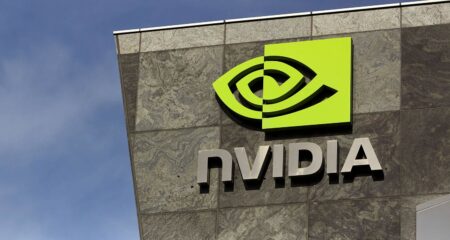 Nvidia shares fell on Monday, with the AI-focused chip maker entering correction territory as it extends a sharp recent selloff.
Nvidia shares fell on Monday, with the AI-focused chip maker entering correction territory as it extends a sharp recent selloff.
The stock fell 4.8% and is on track for its third straight negative session. It has dropped 12% over the three-day slide, putting it past the 10% threshold that represents a correction.
The drop weighed on chip makers with the Philadelphia Stock Exchange Semiconductor Index falling as much as 2.2% on Monday. Broadcom, TSMC and Qualcomm were all lower by at least 2%.
The three-day drop erased more than US$400-billion from Nvidia’s market capitalisation, putting it back below the $3-trillion threshold, as well as below both Microsoft and Apple in size. Nvidia briefly claimed the title as the world’s largest stock last week.
“In the near term, it is plausible that investors begin suffering from AI-fatigue or become more broadly concerned about index concentration,” said Neville Javeri, portfolio manager and head of the Empiric LT Equity team at Allspring Global Investments.
Even with the slump, Nvidia remains up more than 140% this year, making it the second-best performer among S&P 500 Index components, behind Super Micro Computer, another favourite AI play.
The stock suffered a drawdown of about 20% earlier this year, although it quickly returned to all-time highs.
Sky-high demand
While investors have flocked to Nvidia given the sky-high demand for its chips used in AI processing, the scale of Nvidia’s rally — it also soared about 240% over the course of 2023 — has underlined concerns about its valuation. The stock trades at nearly 23x estimated sales over the next 12 months, making it the most expensive in the S&P 500 by this measure.
Still, it remains well liked on Wall Street. Nearly 90% of the analysts tracked by Bloomberg recommend buying, and the average analyst price target points to upside of about 10% from current levels.
“The momentum in Nvidia and AI stocks in general has been staggering,” said Charlie Ashley, portfolio manager at Catalyst Funds. “In terms of investing, I would not be a contrarian right now.” — (c) 2024 Bloomberg LP




